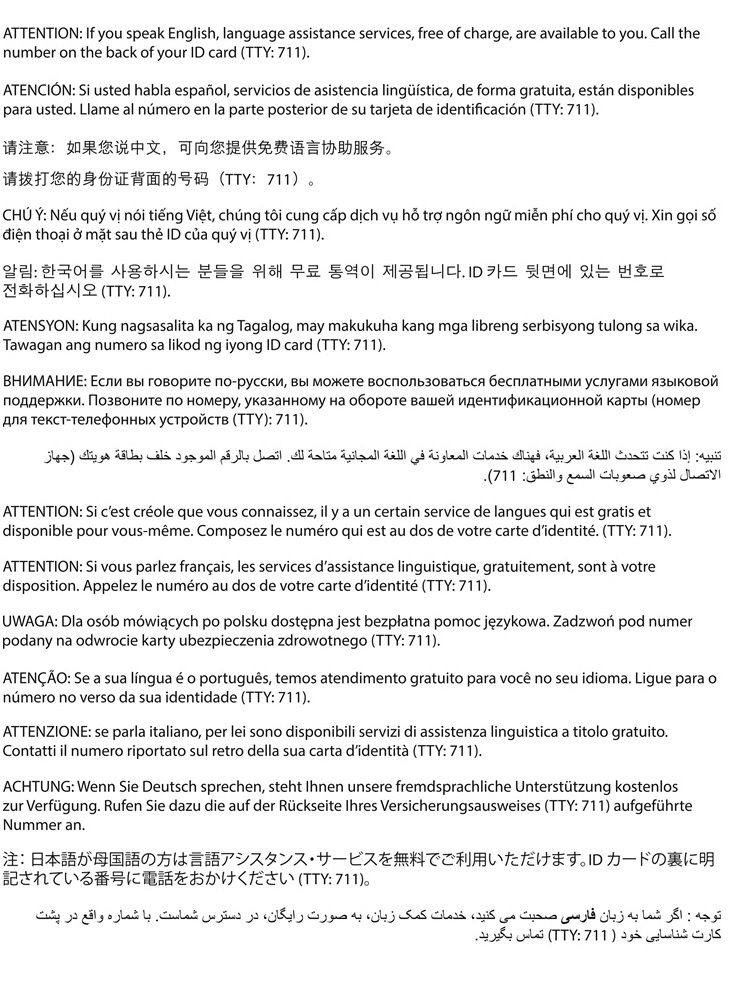This Policy version was replaced on October 28, 2024. To find the newest version, go to https://www.bluecrossmn.com/providers/medical-management, select 'See Medical and Behavioral Health Policies', then 'Blue Cross and Blue Shield of Minnesota Medical and Behavioral Health Policies'. This will bring up the Medical Policy search screen. Enter the policy number without the version number (last three digits).
Drug testing methods are used for monitoring patients in substance use disorder treatment and those undergoing pain management treatment who may use non-prescribed drugs or misuse prescribed drugs, such as opioids. Samples on which testing may be done include urine, oral fluid, and hair.
Urine is the most commonly used sample for drug testing in outpatient substance use disorder treatment and outpatient chronic pain management settings. The two major categories of urine drug testing (UDT) are presumptive drug testing and definitive drug testing. Presumptive tests are immunoassay tests that provide a positive or negative result for the presence of one or more drugs or drug classes based on a prespecified threshold, but do not indicate specific levels. These tests can be performed either in a laboratory or at point-of-care and generally have rapid turnaround time. Definitive tests confirm the presence of the specific drug identified in a screening test and quantify the amount of drug present. These tests are performed in a laboratory rather than at point-of-care which may result in slower turnaround time. Definitive tests can also be used to identify drugs that cannot be measured by immunoassays, such as certain synthetic or semisynthetic opioids. Patients are often assessed by UDT before starting treatment and monitored while they are receiving treatment.
Oral fluid, samples obtained from the oral cavity, can potentially be used to test for drug use. However, the mixture of fluids (e.g. saliva, mucus) varies depending on the collection method used. In addition, drug concentrations can be affected by the collection method.
Hair composed of protein that traps chemicals in the blood at the time the hair develops in the follicle. Thus, hair can be used to detect drug use. Although it is easy to sample and it is difficult to substitute or adulterate, there are disadvantages for use in drug testing including inability to detect recent or light drug use, and test inaccuracy due to environmental exposure, variation in hair texture and cosmetic hair treatments.
Laboratory tests must meet the general regulatory standards of the Clinical Laboratory Improvement Amendments (CLIA). Certain point-of-care immunoassays are commercially available as CLIA-waived tests for drugs such as cocaine, methadone, morphine, and oxycodone.
Note: This policy addresses use of drug testing in outpatient substance use disorder treatment or outpatient chronic pain management settings only. Use of blood as a sample for drug testing is outside the scope of this policy.
Definitions
Stabilization phase: The stabilization and/or detoxification phase of treatment is for patients who experience withdrawal symptoms following prolonged drug abuse. This phase focuses on finding a medication dosage that will minimize withdrawal symptoms and cravings and decrease or eliminate drug abuse. Most patients in opioid treatment are expected to be on a stable dose of medication within 4 weeks of initiating treatment.
Maintenance phase: The maintenance and/or rehabilitation phase of treatment follows the stabilization phase of treatment. This phase begins when a patient is responding optimally to medication treatment and routine dosage adjustments are no longer needed. For most patients in opioid treatment, targeted presumptive screening once every 1 to 3 months is sufficient during the maintenance phase of treatment.
Morphine equivalent dose (MED): A numeric value that describes the sum of the morphine milligram equivalents (MME's) of various opioid drugs prescribed for an individual over a period of time, usually per day.
I. Presumptive Urine Drug Testing
II. Definitive Urine Drug Testing
III. Drug testing using oral fluid or hair samples in outpatient substance use disorder treatment or outpatient chronic pain management settings is considered EXPERIMENTAL/INVESTIGATIVE due to the lack of clinical evidence demonstrating an impact on improved health outcomes.
0007U 0011U 0051U 0082U 0093U 0116U 0117U 0227U 80305 80306 80307 80320-80377 83992 G0480 G0481 G0482 G0483 G0659
No additional statements.
Blue Cross and Blue Shield of Minnesota medical policies apply generally to all Blue Cross and Blue Plus plans and products. Benefit plans vary in coverage and some plans may not provide coverage for certain services addressed in the medical policies. When determining coverage, reference the member’s specific benefit plan, including exclusions and limitations.
Medicaid products may provide different coverage for certain services, which may be addressed in different policies. For Minnesota Health Care Program (MHCP) policies, please consult the MHCP Provider Manual website.
Medicare products may provide different coverage for certain services, which may be addressed in different policies. For Medicare National Coverage Determinations (NCD), Local Coverage Determinations (LCD), and/or Local Coverage Articles, please consult CMS, National Government Services, or CGS websites.
Note that services with specific coverage criteria may be reviewed retrospectively to determine if criteria are being met. Retrospective denial of claims may result if criteria are not met.
Blue Cross and Blue Shield of Minnesota reserves the right to revise, update and/or add to its medical policies at any time without notice. Codes listed on this policy are included for informational purposes only and are subject to change without notice. Inclusion or exclusion of a code does not constitute or imply member coverage or provider reimbursement.
These guidelines are the proprietary information of Blue Cross and Blue Shield of Minnesota. Any sale, copying or dissemination of the medical policies is prohibited; however, limited copying of medical policies is permitted for individual use.
Acknowledgements:
CPT® codes copyright American Medical Association® 2023. All rights reserved.
CDT codes copyright American Dental Association® 2023. All rights reserved.
